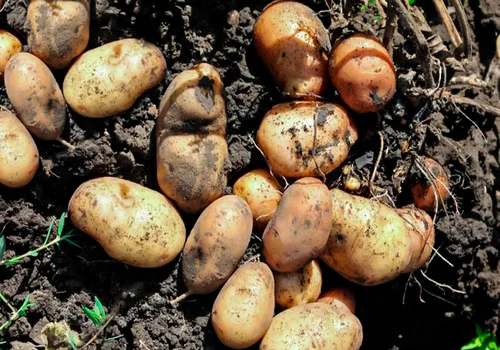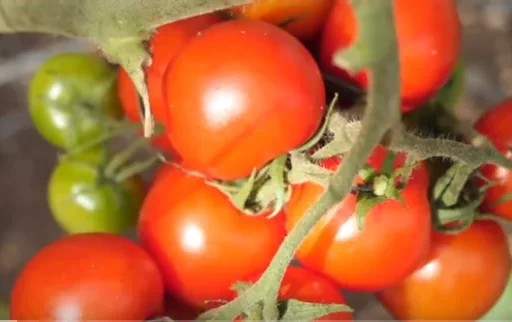Growing potatoes is one of the most rewarding and practical activities you can include in your vegetable garden. Potatoes are versatile, store well, and can provide a long-term food source for your family. Whether you’re new to gardening or a seasoned grower, this guide will walk you through five essential tips to ensure you produce more potatoes than ever before. Follow these steps for a successful potato harvest that can yield delicious, nutrient-rich tubers for months.
Tip #1: When to Plant Potatoes
Timing is crucial when growing potatoes. Potatoes thrive in cooler weather, which is why regions like Ireland and Idaho, famous for their potato production, are ideal for this crop. To maximize your potato yield, plant them about 1 to 2 weeks before the last frost date in your area.
Potatoes take time to sprout and grow roots before breaking through the soil, so planting them before the last frost gives them a head start. While the foliage may be susceptible to frost damage, the plants will likely survive because the roots remain underground. By the time the foliage emerges, the frost risk will have passed, and the potatoes can thrive in the cool spring weather.
Potatoes do not fare well in hot weather, so it’s crucial to plant them early in the season. As summer heat increases, the quality and yield of your potato crop may decrease, making early planting the key to a successful harvest.
Tip #2: Growing Potatoes in Containers
For gardeners with limited space, growing potatoes in containers can be an excellent solution. Large containers, like 20-gallon fabric grow bags, are ideal for growing potatoes. While it’s common to assume that growing in containers yields less produce, container gardening offers several benefits for potatoes, especially for those with small residential plots or raised beds.
When growing potatoes in the ground, you need to “hill” the plants by mounding soil around the stems as they grow. This allows the plant to develop more tubers along the stems. In raised beds, hilling can be difficult and impractical. Containers eliminate the need for this step, and while the yield per container might be smaller, the convenience of harvesting makes up for it.
When it’s time to harvest, simply dump out the soil from the container and gather all the potatoes. This method ensures you don’t miss any potatoes and prevents diseases that can spread when potatoes are grown in the same soil year after year. Growing in containers also allows for better control over soil quality and prevents overcrowding in your garden beds.
Tip #3: Use Seed Potatoes or Organic Potatoes
Choosing the right type of potatoes to plant is essential. Regular grocery store potatoes often have chemicals applied to them to prevent sprouting. If you plant these, they may rot in the ground before they even sprout. To avoid this, you should plant certified seed potatoes or organic potatoes.

Seed potatoes are specifically meant for planting and have not been treated with sprout inhibitors. You can find them at garden centers, hardware stores, or online seed suppliers. Organic potatoes from the grocery store are also safe to plant, as they have not been treated with chemicals.
However, there is one exception: if you have conventional potatoes that have already sprouted in your pantry, they can be planted successfully. Once the sprouting process begins, the chemicals used to prevent sprouting become ineffective, and the potatoes can grow.
When planting potatoes, you can either plant them whole or cut them into pieces. If cutting them, be sure to let the cut sides dry out and callous over for 48 hours before planting to reduce the risk of rot.
Tip #4: Proper Fertilization for Maximum Growth
Potatoes are heavy feeders, meaning they require a lot of nutrients to grow. To ensure your plants are getting the nutrients they need, it’s essential to fertilize properly. When growing potatoes in containers, the plants are confined to a limited amount of soil, and nutrients can be quickly depleted.
Before planting, prepare the soil by mixing in an organic, all-purpose fertilizer and bone meal. The all-purpose fertilizer will provide a balanced mix of nutrients (look for something like a 5-5-5 NPK ratio), while bone meal supplies calcium and phosphorus, which are crucial for root and tuber development.
If you’re growing potatoes in the ground or raised beds, adding compost to the soil is beneficial. Compost provides a slow-release source of nutrients that will feed the plants throughout the growing season.
Tip #5: Mulching and Watering for Healthy Growth
Potatoes need consistent moisture to grow well, and the best way to maintain even moisture levels is by using mulch. After planting, cover the soil with a 2 to 3-inch layer of organic mulch such as hardwood bark, pine needles, or grass clippings. This will help keep the soil evenly moist, suppress weeds, and protect the developing tubers from direct sunlight.
Proper watering is also critical. While potatoes need regular moisture, be careful not to overwater, as this can cause the tubers to rot. Water deeply and consistently, ensuring that the soil remains moist but not waterlogged. If you’re growing potatoes in containers, you may need to water more frequently, as container soil tends to dry out faster than garden soil.
By following these five tips, you can enjoy a bountiful harvest of homegrown potatoes. Whether you’re planting in the ground, raised beds, or containers, potatoes are an excellent addition to any garden. With the right timing, care, and attention to detail, you’ll have an abundance of delicious potatoes to store and enjoy.
Frequently Asked Questions
1. Can I plant potatoes from the grocery store? It’s not recommended to plant conventional grocery store potatoes unless they have already sprouted. These potatoes are often treated with chemicals to prevent sprouting. Use certified seed potatoes or organic potatoes for best results.
2. What’s the best time to plant potatoes? Potatoes should be planted 1 to 2 weeks before the last frost date in your area to give them time to establish roots before the foliage emerges.
3. Can I grow potatoes in containers? Yes, growing potatoes in containers is a great option for gardeners with limited space. Fabric grow bags or large containers work well for potatoes.
4. How often should I water my potatoes? Potatoes need consistent moisture but avoid overwatering. The soil should be kept evenly moist but not soggy.
5. Should I plant whole potatoes or cut them up? You can plant either whole potatoes or cut them into pieces, as long as each piece has at least one sprout or “eye.” Allow cut potatoes to dry out for 48 hours before planting to reduce the risk of rot.
6. Do potatoes need fertilizer? Yes, potatoes are heavy feeders. Use a balanced organic fertilizer and bone meal to ensure they get the nutrients they need to grow healthy tubers.
7. Can I plant potatoes in the same spot every year? It’s best to rotate your potato crops to prevent soil-borne diseases. Avoid planting potatoes in the same location year after year.




